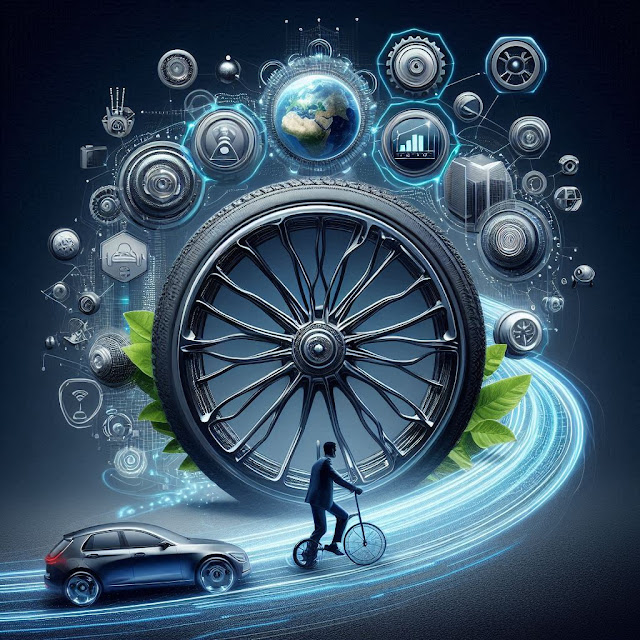Introduction
The wheel stands as one of humanity’s most ingenious inventions, a simple yet revolutionary design that has powered transportation for millennia. Today, as we embrace the digital era, artificial intelligence (AI) is paving the way for a transformative evolution in wheel technology. This article delves into how AI is reshaping wheel design, optimization, performance, and maintenance—ushering in a new age of smarter, lighter, and more sustainable mobility solutions.
1. From Ancient Innovations to Modern Marvels
Historically, the wheel’s evolution has been marked by gradual improvements—from carved wooden disks to metal alloys and composite materials—all aimed at enhancing durability and performance. In modern times, traditional manufacturing and design practices have given way to high-tech approaches. AI-powered tools are now used to analyze centuries of design evolution and push the boundaries of what is possible in both form and function.
2. AI in Wheel Design and Material Optimization
One of the most significant contributions of AI lies in the realm of design innovation. Through generative design algorithms, AI explores countless design variations, rapidly iterating to produce structures that optimize strength, weight, and durability. These AI-driven simulations consider stress distribution, material behavior, and environmental factors, resulting in wheels that are not only lighter but also more resilient. By leveraging machine learning, engineers can predict how new materials will perform under varying conditions, ensuring that every design is both innovative and practical.
3. Performance Optimization and Dynamic Control
AI doesn’t just influence the static design of wheels—it also plays a crucial role in enhancing dynamic performance. Advanced simulations run by AI can predict how a wheel will perform at different speeds, under varying loads, and in adverse weather conditions. In the realm of high-performance vehicles, these insights facilitate the development of wheels engineered for maximum efficiency and safety. Moreover, AI integrated with vehicle dynamics allows real-time monitoring and adjustments, ensuring that wheels work in harmony with braking systems, suspension setups, and steering responses for optimal performance.
4. Smart Wheels: Sensor Integration and Predictive Maintenance
The advent of smart technology is redefining wheels from passive components to active, intelligent systems. Modern wheels are increasingly being fitted with sensors that monitor parameters such as temperature, pressure, and wear. These sensors feed data into AI systems which analyze the information in real time, identifying potential issues before they escalate. Predictive maintenance powered by AI helps in forecasting tire degradation and mechanical failures, reducing downtime and enhancing safety a crucial advancement for both commercial transportation and autonomous vehicles.
5. Sustainability and Environmental Impact
AI’s influence extends to making wheel design more environmentally sustainable. Through material optimization and weight reduction, AI helps create wheels that require less energy for operation, thereby improving fuel efficiency or extending the range of electric vehicles. In addition, the generative design process minimizes material waste by pinpointing the most efficient use of resources. This eco-friendly approach not only reduces the environmental footprint during manufacturing but also contributes to greener, more energy-efficient transportation systems.
6. The Future of Wheels in Autonomous Transportation
As autonomous vehicles become a reality, the integration of AI into every facet of transportation grows ever more critical. Future wheels will be an integral part of the vehicle’s overall AI ecosystem, communicating continuously with onboard diagnostics and infrastructure systems. This seamless integration promises enhanced safety, rapid adaptability to evolving road conditions, and a more intuitive driving experience. The evolution of wheels, powered by AI, thus plays a pivotal role in the broader narrative of smart and autonomous transportation.
Conclusion
The transformation of wheel technology through artificial intelligence is a prime example of how ancient innovations can be revitalized by modern technology. By merging advanced design, real-time performance analytics, smart sensor integration, and sustainable practices, AI is not only reinventing the wheel but also setting the stage for the future of transportation. As these developments continue to unfold, we can expect smarter, safer, and more efficient mobility solutions that redefine the very fabric of how we move.



